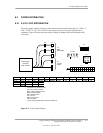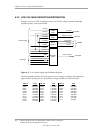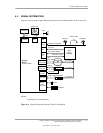
Technical Reference Guide
Compaq Deskpro EXS and Workstation 300 Personal Computers
Featuring the Intel Pentium 4 Processor
First Edition - December 2000
7-5
7.3.3 MEMORY DETECTION AND CONFIGURATION
This system uses the Serial Presence Detect (SPD) method of determining the installed RIMM
configuration. The BIOS communicates with an EEPROM on each RIMM through the SMBus to
obtain data on the following RIMM parameters:
♦ Presence
♦ Size
♦ Type
♦ PC800 capability
NOTE: Refer to Chapter 3, “Processor/Memory Subsystem” for the SPD format and
RIMM data specific to this system.
The BIOS performs memory detection and configuration with the following steps:
1. Program the buffer strength control registers based on SPD data and the RIMM slots that are
populated.
2. Determine the memory size for each RIMM and program the MCH accordingly.
3. Enable refresh.
7.3.4 BOOT ERROR CODES
The BIOS provides visual and audible indications of a failed system boot by using the keyboard
LEDs and the system speaker. The error conditions are as follows:
Table 7-2. Boot Error Codes
Table 7-2. Boot Error Codes
Visual [1] Audible Meaning
Num Lock LED blinks 1 short, 2 long beeps System memory not present or incompatible.
Scroll Lock LED blinks 2 long, 1 short beeps Hardware failure before graphics initialization.
Caps Lock LED blinks 1 long, 2 short beeps Graphics controller not present or failed to
initialize.
Num, Caps, Scroll Lock LEDs
blink
1 long, 3 short beeps ROM failure.
Num, Caps, Scroll Lock LEDs
blink in sequence
none Network service mode
NOTE:
[1] Provided with PS/2 keyboard only.


















